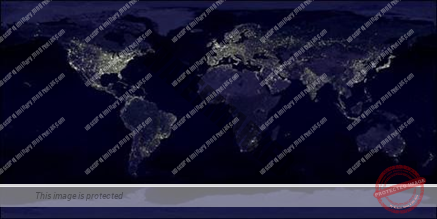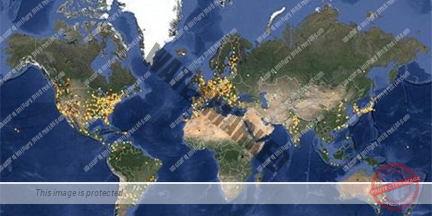- LIGHT POLLUTION
- EFFECTS OF LIGHT POLLUTION
- RADIOACTIVE POLLUTION
UNIT 4 – ENVIRONMENTAL DEGRADATION – PART 7
LIGHT POLLUTION
The inappropriate or excessive use of artificial light – known as light pollution – can have serious environmental consequences for humans, wildlife, and our climate. Components of light pollution include:
- Glare– excessive brightness that causes visual discomfort
- Skyglow – brightening of the night sky over inhabited areas
- Light Trespass– light falling where it is not intended or needed
- Clutter– bright, confusing and excessive groupings of light sources
Light pollution is a side effect of industrial civilization. Its sources include Building Exterior and Interior Lighting, Advertising, Commercial Properties, Offices, Factories, Streetlights, and illuminated sporting venues. The fact is that much outdoor lighting used at night is inefficient, overly bright, poorly targeted, improperly shielded, and, in many cases, completely unnecessary.
This light, and the electricity used to create it, is being wasted by spilling it into the sky, rather than focusing it on to the actual objects and areas that people want illuminated. With much of the Earth’s population living under light-polluted skies, over lighting is an international concern.
According to the “World Atlas of Artificial Night Sky Brightness,” 80% of the world’s population lives under skyglow. In the United States and Europe 99% of the public can’t experience a natural night, that cannot see the stars.
EFFECTS OF LIGHT POLLUTION
For three billion years, life on Earth existed in a rhythm of light and dark that was created solely by the illumination of the Sun, Moon and stars. Now, artificial lights overpower the darkness and our cities glow at night, disrupting the natural day-night pattern and shifting the delicate balance of our environment.
The negative effects of the loss of this inspirational natural resource might seem intangible. But a growing body of evidence links the brightening night sky directly to measurable negative impacts including
- Increasing energy consumption
- Disrupting the ecosystem and wildlife
- Harming human health
- Effecting crime and safety
EFFECT ON THE WILDLIFE AND ECOSYSTEM
Plants and animals depend on Earth’s daily cycle of light and dark rhythm to govern life-sustaining behaviours such as reproduction, nourishment, sleep, and protection from predators. Scientific evidence suggests that artificial light at night has negative and deadly effects on many creatures including Amphibians, Birds, Mammals, Insects and Plants.
Artificial Lights Disrupt the World’s Ecosystems. Nocturnal animals sleep during the day and are active at night. Light pollution radically alters their nighttime environment by turning night into day. “Near cities, cloudy skies are now hundreds, or even thousands of times brighter than they were 200 years ago. Glare from artificial lights can also impact Wetland Habitats that are home to amphibians such as frogs and toads, whose nighttime croaking is part of the breeding ritual.
Artificial lights disrupt this nocturnal activity, interfering with reproduction and reducing populations. Sea Turtles live in the ocean but hatch at night on the beach. Hatchlings find the sea by detecting the bright horizon over the ocean. Artificial lights draw them away from the ocean.
Birds that migrate or hunt at night navigate by moonlight and starlight. Artificial light can cause them to wander off course and toward the dangerous nighttime landscapes of cities. Every year millions of birds die colliding with needlessly illuminated buildings and towers.
Migratory birds depend on cues from properly timed seasonal schedules. Artificial lights can cause them to migrate too early or too late and miss ideal climate conditions for nesting, foraging and other behaviours. Many insects are drawn to light, but artificial lights can create a fatal attraction.
Declining insect populations negatively impact all species that rely on insects for food or pollination. Some predators exploit this attraction to their advantage, affecting food webs in unanticipated ways. Therefore, it causes imbalance in the entire food chain and ecosystem leading to perishing of various keystone species like birds and insects.
RADIOACTIVE POLLUTION
The radioactive pollution is defined as the physical pollution of living organisms and their environment as a result of release of radioactive substances into the environment during nuclear explosions and testing of nuclear weapons, Nuclear Weapon Production And Decommissioning, Mining Of Radioactive Ores, handling and disposal of radioactive waste, and accidents at nuclear power plants.
Nuclear tests are carried out to determine the effectiveness, yield, and explosive capability of nuclear weapons. The proportion of radioactive pollution is 15% of the total energy of the explosion. Radioactive pollution of water, water sources, and air space is the result of radioactive fallout from the cloud of a nuclear explosion. Radionuclides are the main sources of pollution; they emit beta particles and gamma rays, radioactive substances.


